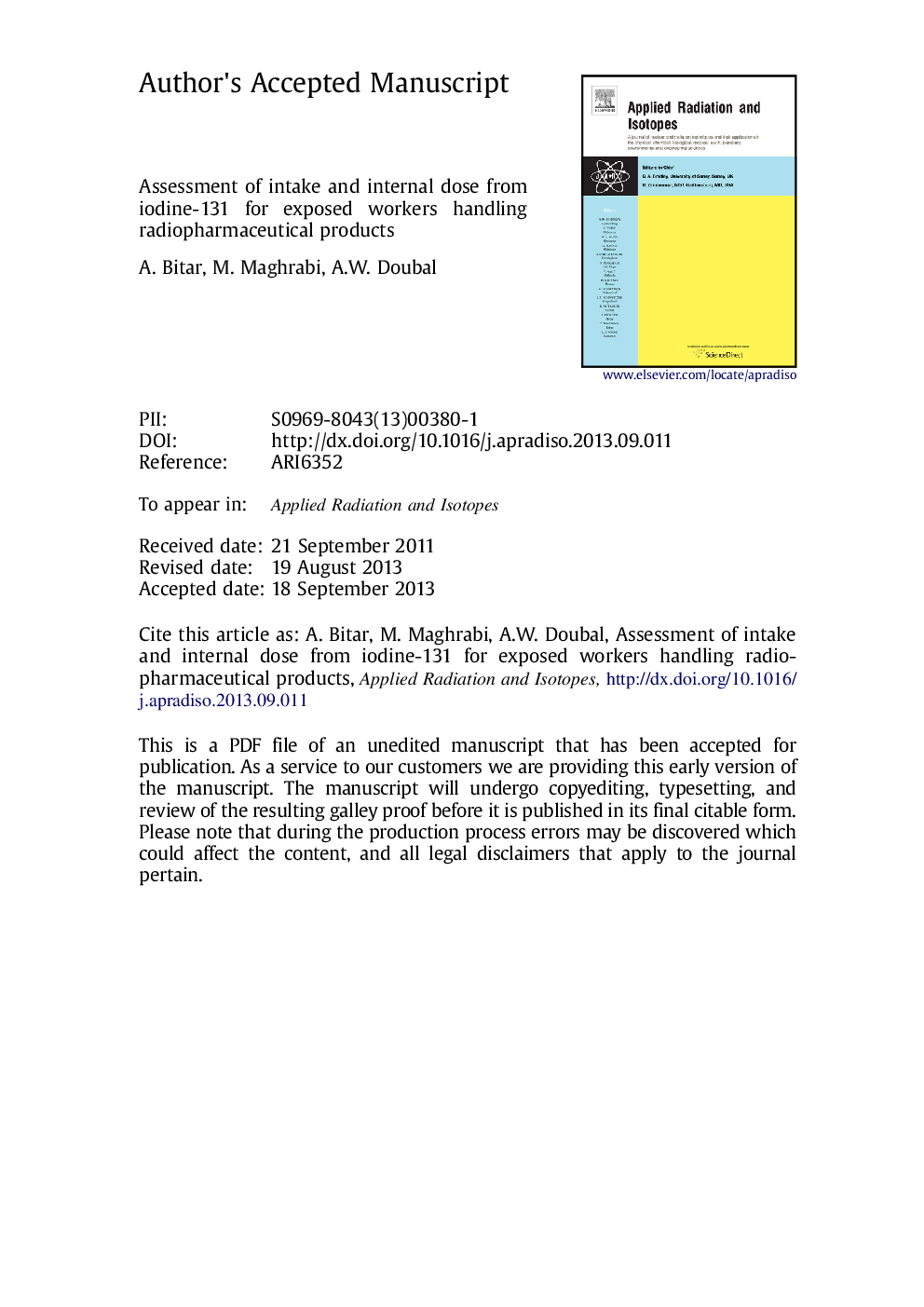| Article ID | Journal | Published Year | Pages | File Type |
|---|---|---|---|---|
| 8210525 | Applied Radiation and Isotopes | 2013 | 15 Pages |
Abstract
Two methods for determination of internal dose due to 131I intake during the preparation and handling of iodine radiopharmaceutical products have been compared. The first method was based on the measurement of 131I in 24-hour urine samples while the second method was based on the measurement in vivo of 131I in thyroid. The results have shown that urine analysis method can be used as a screening test but not for internal dose assessment of exposed workers. Thyroid monitoring method was found to be more reliable and accurate method for assessing internal dose from 131I intake. In addition, the assessed internal dose showed that the annual internal effective dose for some workers was below 1Â mSv with no risk classification, whereas the results of other group of workers were between 1 and 6Â mSv with low risk classification. Only one worker reached 7.66Â mSv with high risk classification; and this worker must be monitored individually.
Keywords
Related Topics
Physical Sciences and Engineering
Physics and Astronomy
Radiation
Authors
A. Bitar, M. Maghrabi, A.W. Doubal,
